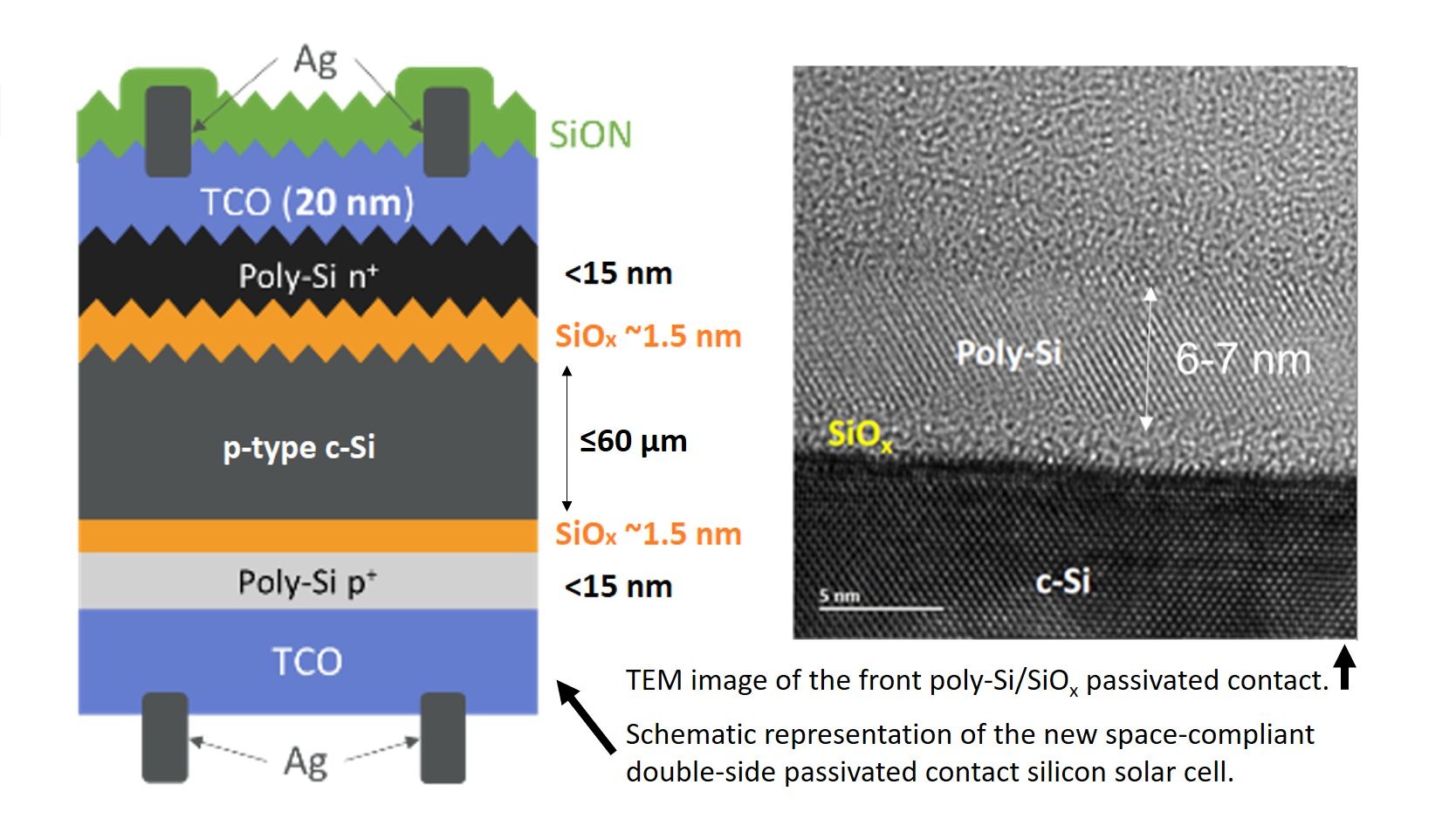The photovoltaic arrays (PVA) of satellites use III-V multi-junction cells. These cells count for about 75% in the total cost of a PVA, with average III-V cells prices around 100 €/Wp [1]. In parallel, crystalline-silicon (c-Si) modules for the terrestrial market experienced outstanding price reductions over the last decades, with current values close to 0.2 €/Wp. Thus, c-Si cells offers major cost reductions opportunities. New c-Si cell concepts emerged these past few years with high opportunities also for LEO missions, such as heterojunctions or poly-crystalline Si (poly-Si) on tunnel oxide (SiOx) passivated contacts. They allowed strong efficiency improvements (record values as high as 26% [2]). CEA developed an innovative cell for terrestrial applications, relying on poly-Si/SiOx stacks integrated on both the front and rear surfaces [3]. To avoid parasitic light absorption, ultra-thin poly-Si layers (6-15 nm) are used. This technology is referred to as CARLAH (Conductive Anti-Reflective LAyer for High temperature heterojunction).
CARLAH gathers several important advantages for space missions:
- it can be processed from the new Ga-doped p-type Si wafers, which feature improved radiation hardness [4]
- the technology allows the processing of thin wafers (≤60 µm instead of 160 µm for conventional terrestrial cells) offering radiation hardness improvements and significant mass reductions
- the cell fabrication induces gettering and hydrogenation effects, which can mitigate radiation-induced defects
- the front dielectric ensures a good UV hardness
- the fabrication is compatible with the heterojunction cells production lines.
Therefore, this project will bring proof-of-concepts of lightweight radiation-hardened CARLAH cells. In addition, via modeling and experimental studies (e.g. ageing tests under irradiations and UV exposures), their potential for LEO missions will be assessed and compared with reference devices and other evolving terrestrial cells.

